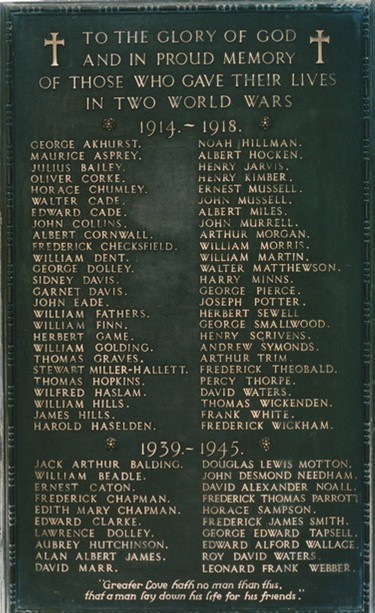By Philippa Rooke
This article was published in the April 2017 edition of Soul Search, the Journal of The Sole Society
Ed: Philippa Rooke wrote this piece about Herbert Sewell who died during WW1 to go in the St Martin of Tours, Chelfsield, Kent, Parish Magazine as part of a series. To explain she writes: ‘Commemoration of the 100th anniversary of the First World War started 18 months [previously], but it hadn’t occurred to me before to specifically think about the people that lived in our parish who died. I was inspired to start a research project on them, to find out where they lived and when they died, in order to write a short article each month on those who died 100 years before, so that we could remember and honour them individually.’ She has very kindly allowed us to reproduce her article here.
I’ve returned to my research on the men behind the names on our War Memorial in the porch following a break of a couple of months as there were no casualties to report on. For April we have a new name to commemorate from those who died one hundred years ago.
12987 Private Herbert Charles Sewell of the 7th Battalion the Royal Sussex died of wounds on 16th April 1917 aged 40. He is buried at Etaples Military Cemetery France. He is listed as the son of the late William Alfred and Rose Sewell, and husband of Emily J Sewell of ‘Retreat’, Laxey Road, Green Street Green. He’s also remembered on the war memorial at St Mary’s, Green Street Green. In the official Commonwealth War Graves listing he is a ‘native of Clapham Rise London’.
Herbert was born in Clapham in about 1877, and on the census for 1881 he is aged three, living with parents William & Rose, and five brothers and sisters in Clapham Road. William is listed as a horse dealer but later, on Herbert’s marriage record, he is listed as a veterinary surgeon. By 1901 Herbert is living in a boarding house in Westbourne Grove, with at least 30 other people – the living conditions can’t have been very pleasant – and is listed a drapers assistant.
In 1911 Herbert is living in Reedworth Street, Kennington, with his wife Emily (nee Parker), whom he married in 1903 at St Philip’s, Lambeth, and three young children, Cecil, Kathleen and Rosemary. He’s still a Draper’s Assistant, but unusually for the census it also specifically states he works for ‘Liberty & Co’. Sewell’s army service records haven’t survived but as he enlisted at Bromley, and his wife was listed as living in Laxey Road at the time of his death, perhaps he had moved to a new job in Green Street Green before he joined up.
The 7th (Service) Battalion of the Royal Sussex Regiment was formed in September 1914 by men volunteering for Lord Kitchener’s New Armies and landed at Boulogne-sur-Mer as part of the 36th Brigade in the 12th (Eastern) Division in June 1915 for service on the Western Front. As Herbert Sewell died on 16th April 2017 of wounds, I think it’s possible he was injured as they were taking part in the Nivelle Offensive in the Battle of Arras. The French Commander-in-Chief, General Robert Nivelle, ordered a new offensive against the German trenches, promising that it would end the war within 48 hours. The 16th April attack, also known as Chemin des Dames, after the area where the offensive took place, would be 1.2 million men strong, to be preceded by a week-long artillery bombardment and accompanied by tanks. However, the operation proceeded poorly as the French troops, with the help of two Russian brigades, had to negotiate rough, upward-sloping terrain. In addition, detailed planning had been dislocated by the voluntary German withdrawal to the Hindenburg Line. Secrecy had been compromised and German planes gained control of the sky making reconnaissance difficult. This allowed the creeping barrage to move too far ahead of the advancing troops. Within a week 100,000 soldiers were casualties.
Herbert’s headstone has the simple message ‘Requiescat in pace’, which was paid for by a Miss Violet Sewell, C/o Athenaeum, 107 Pall Mall. Violet was one of Herbert’s sisters, and as in 1911 she was a Housekeeper for a large London hotel, the Hotel Russell in Russell Square, I suspect she was not a member [of the Athenaeum], so perhaps she had moved to work at this esteemed London Gentlemen’s Club.

